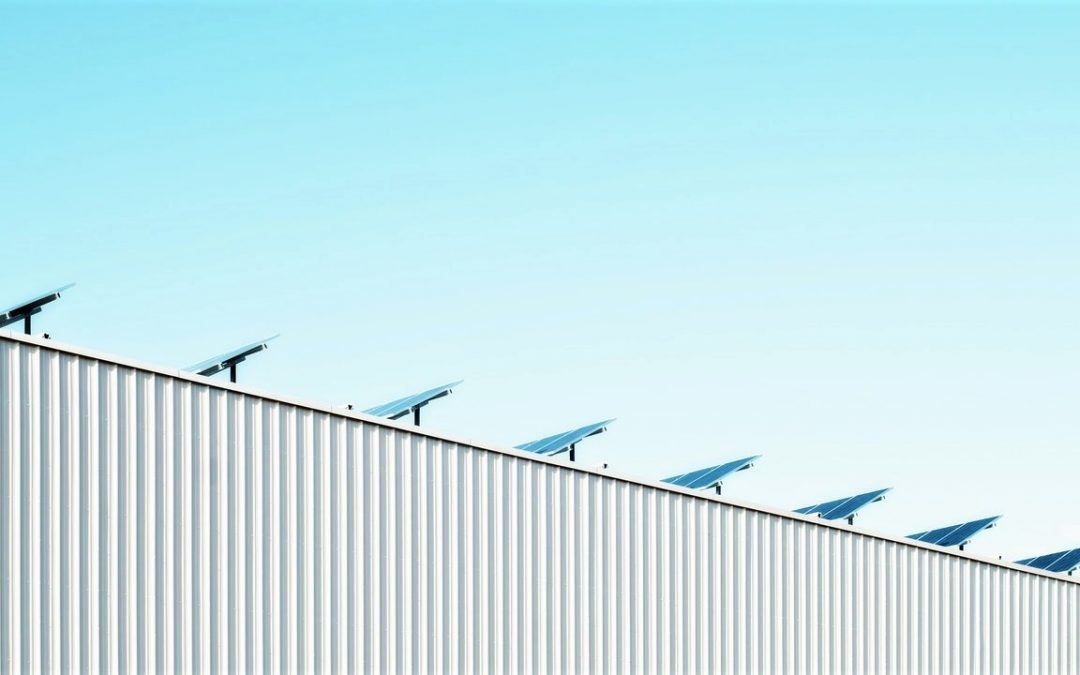By: Alexie Roy-Lafontaine
As a society, we are at the crossroads between a human and a sanitary crisis and an economic and social crisis. The current historical confinement period and self-assessment leads to certain reflections in regard to our lifestyles, our consumption habits and our vision of work. These introspections lead many to wonder where the environment’s place is in this crisis, and whether this horrible period for humanity is not a period of relief for the Earth.
Economics, society and nature are intertwined by their dynamic interactions. Indeed, nature’s response to the paralysis of travel and economic activities as a result of the global confinement measures due to COVID-19 was almost instantaneous. Reducing the stress imposed on the components of the Earth system by anthropogenic activities have positive consequences on the environment. Decreases in concentrations of greenhouse gases and particulate matter released into the atmosphere have had real impacts on environmental health, but also on human health. According to the World Health Organization, air quality degradation is responsible for the deaths of more than 4.2 million people each year. Of these deaths, 1 million occur in China alone, and then, during the period of confinement and industrial shutdowns, air quality has improved to the point of saving about 50 000 lives [1]. In the case of greenhouse gases, some researchers estimate concentrations were equivalent to those of 2006. A 17% reduction in GHG emissions is due to the suspension of industrial activities and travel [2].
Nevertheless, current times are not for celebration. Notwithstanding the downward trends in GHG balance sheets for the years 2020-2021, their long-term states depend on the path governments will take to revive the economy. These changes are temporary as they are not the result of structural changes in the economy, transport or energy systems [2]. Let’s also agree that a sanitary crisis is not the right way to reduce our GHG emissions. It is imperative to find a sustainable state of equilibrium in which actions to reduce GHG emissions will be favourable. This balance must ensure the security and freedom of individuals in the global system.
So, what will the post-COVID look like? Will we go back to business as usual? Will we take this opportunity to reform linear economic patterns of consumption and work towards sustainable development? Or in the worst-case scenario, will we opt for a stimulus that does not take into account the 2050 agenda? In the case of the 2008 economic recession, GHG balance sheets also tended to decline, but during the economic recovery, these concentrations reached new heights as the economy was stimulated at the expense of environmental health [3].
Let’s hope we’ve learned from our mistakes. This period of economic recovery is decisive in the achievement or not of the climate targets set by the Paris Agreement, and thus in the way of dealing with this next crisis: the climate crisis.
The current pandemic highlights the weaknesses of our economic system, which is entirely relevant to preparing for the climate crisis. Researchers in the journal Nature estimated that the cost of inaction on climate change would be comparable to that of the current pandemic [4]. In addition, exposure to air pollution increases the risk of complications to diseases such as COVID-19. Deforestation and temperature changes are the cause of pandemic emergences [5]. In 30 years, 60% of natural habitats have been destroyed, which may result in up to four times more epidemics [4].
Crumbly Business Models
The resilience of the economic system, known as linear, was tested during the actual crisis. Decreases of up to 97% in some activity sectors were observed [4]. This is to say that this resilience test has been failed handily on a global scale. We depend on transport and open borders as a result of globalization and the over-optimization of certain components of the system [6]. Some companies have become ultra-enriched and others have completely collapsed. By focusing on optimizing a single product, for example, it can be more difficult to adapt to the variations to which societies are subjected.
In order to better face future crises, economic systems must be more resilient. By incorporating, for example, the principles of economic circularity [7], we benefit from less dependence on the extraction of limited natural resources, better cooperation between companies through industrial symbiosis and a healthier environment with the incorporation of renewable energy technologies [8]. However, economic recovery plans must be aligned with these principles.
The health crisis of COVID-19 has had a significant impact on unemployment rates, on overall GDP and on the increase in the debt of each country. The decrease in overall GDP is 20% in the second quarter of 2020 [4]. In May, Canada’s unemployment rate was 13.7%, the highest level reached since 1976 [9]. In addition, many individuals still use emergency financial measures established by governments because they fail to find jobs equivalent to what they had previous to the pandemic. Canada’s debt is $343.2 billion for 2020-2021 [10]. It is therefore crucial that governments develop economic recovery plans. A poorer world, anxious for finances and health, is a world less inclined to invest in environmental solutions [11].
Pillars of Economic Recovery: Government Directions
Some governments are taking advantage of the pandemic to boost their country’s economy by integrating more eco-responsible practices and investing in green technologies, strategies to achieve the 2050 agenda, and which also stimulates employment in several spheres (engineering, management, design, manufacturing, etc.). China, for example, is committing $500 million to install charging stations for electric cars [3].
In Canada, citizens are calling for an economic recovery that will respond to the climate crisis. The federal government is committed to the complete elimination of GHGs by 2050. Achieving this target is a guarantee of a healthy future, which will depend on how Canada responds to the economic benefits of COVID-19. It is currently angular to say that the federal government is heading in the right direction, having announced a C$750 million investment in an oil and gas GHG emission reduction fund. These same industries are lobbying the government to roll back Canada from the demands for fair and transformational post-COVID economic stimulus. In addition, these high-emission sectors, as well as the automotive and aviation sectors are putting significant pressure on the government to provide them with bailout financing [12].
The International Institute for Sustainable Development (IISD) has submitted a report to the federal government for a green economic recovery in Canada, identifying 7 principles that would meet the 2050 climate commitments. The aim of this report is a recovery that will transform the economy and societies, and have a lasting impact on our ability to cope with another crisis, climate change [12].
In Quebec, a more efficient and low-carbon economic framework was being put forward. However, the COVID crisis is interfering between these policies and their implementation. We have to go back to where we were with these policies and work hard to make them happen. Quebecers send $5 billion to $10 billion to the United States and Alberta each year to finance fossil fuel production activities in exchange for the import of oil and gas. That amount of money accounts for most of our trade deficit.
By improving energy efficiency and replacing fossil fuel imports with the production and use of local renewable energy (biomethanisation, transport electrification, etc.), this deficit can be reduced and even reversed. Quebec could invest $5 billion a year in its territory to finance jobs and propel the economy, for example [13].
The Role of Business in this Economic Recovery
Businesses are also holding a piece of the stick in this period of economic recovery. They may decide whether or not to work towards sustainable development. The confinement period has completely transformed the labour industry. Employees and employers are surfing the telecommuting wave more easily than expected. This not necessarily temporary change has a direct impact on each person’s travel mode and frequency. A study conducted in France concluded that the introduction of a single telecommuting day per week for 80% of eligible jobs would prevent about 2 million tons of CO2 emissions per year [4]. De-cluttering highways and public transit services during peak hours in urban centers are also positive social impacts of this change.
It is still impossible to predict what consumer behaviour will be in the post-COVID world. However, true awareness has begun in this period of confinement. We have seen unprecedented enthusiasm for local and responsible purchasing, active travel modes and civil solidarity [14].
Thus, this slower period represents a blank canvas for the revival of our activities. Civil society has more power than ever: we are fortunate to be masters painters of our economies and the actions our governments take. Unlike COVID-19, the scientific community has been predicting the climate crisis for several years. The current pandemic has all the more emphasized the importance of listening to science and facts. It is therefore categorical that post-COVID efforts are in parallel with the Paris Agreement’s climate goals. One thing is certain; the climate crisis is not giving way to COVID. Pandemic or not, its economy is running on gold.

